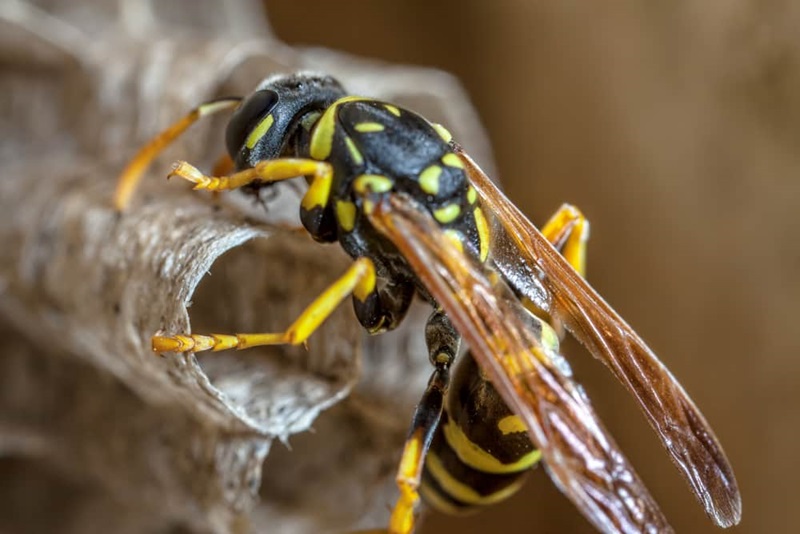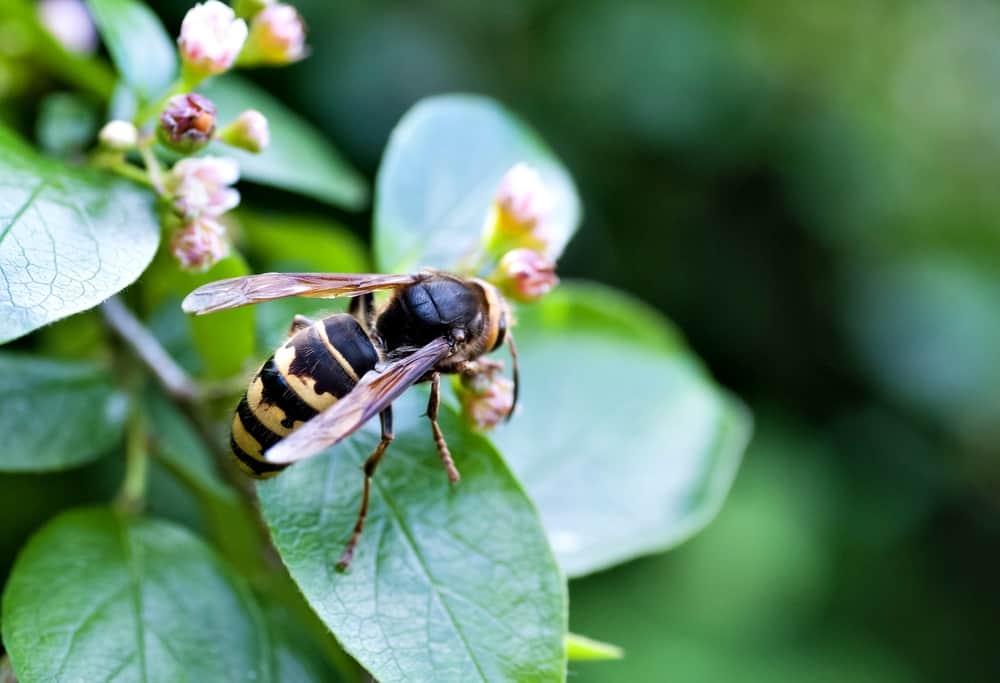Hornets can be ferocious about defending their hive, and because their stinger contains no barb, they’re capable of inflicting multiple painful stings when angered.

You’ve likely heard phrases like “madder than a hornet,” or “stir up a hornet’s nest,” but do you know what a hornet actually is? In many regions of the United States, the terms “wasp” and “hornet” are used interchangeably. But are they the same thing?
Well, yes and no. If you’re confused, we don’t blame you. Read on to learn what differentiates these insects.
Hornets vs Wasps
First things first, hornets are actually a subset of wasps. And there are different species of hornets and different species of wasps. So, for comparison’s sake, we’re going to talk about the popular “paper wasp” and two species of what people commonly call “hornets,” all of which are stinging insects that are often found nesting on structures, like homes.
Paper Wasp

There are many different species of paper wasps. These wasps are generally around 1 inch in length and are brown in color with yellow or reddish markings. Some paper wasps are dark red. These wasps get their name from the paper-like nests they construct. These are often umbrella-like in shape and can be found hanging from:
- Porch ceilings
- Door frames
- Eaves and railings
The majority of paper wasps are not aggressive (it depends on the species) and can help control other pest insects.
Hornets

As mentioned before, all hornets are wasps. Worldwide, there are about 20 species of hornets, and the two most common in the U.S. are the European hornet and the bald-faced hornet. Hornets belong to different wasp families, including the family Vespidae and the sub-family Vespinae. So, while all hornets are wasps, not all wasps are hornets. In fact, there are 30,000 identified species of wasps, but only about 20 of these species are hornets.
The European hornet is the only true hornet found in the U.S., as the bald-faced hornet is actually more closely related to the yellow jacket. The European hornet is brown with yellow-orange stripes and tends to be 1 to 1 1/2 inches in length. The bald-faced hornet is slightly smaller. It’s usually about an inch in length and is black with white-gray stripes.
You’re probably wondering what exactly sets hornets and other wasps apart. Here are several facts that can help you draw a line between the two.
- Non-hornet wasps typically have very narrow waists. Hornets have slightly thicker midsections.
- Hornets eat other insects and don’t usually seek out sweet nectars, saps or proteins. Other wasps also eat insects, but unlike hornets they are prone to scavenging for sweeter foods and proteins.
- Hornets only build aerial nests. Many other wasp species also build these nests, including the well-known paper wasp. However, some non-hornet wasp species live underground, while others — like the cow killer wasp (red velvet ant) — don’t have nests at all.
- Wasps that aren’t members of the Vespinae sub-family come in a wide variety of colors. Hornets tend to have reddish-brown heads and thoraxes, with abdomens that are golden in color with dark brown stripes.
- The majority of wasp species are not social. Hornets are social insects.
Are People Allergic to Hornets?
It’s possible to be allergic to almost anything. As you learned, hornets are a type of wasp. Therefore, someone who is allergic to wasp or bee stings stands a good chance of having a reaction to a hornet sting. Additionally, hornets are known for being especially aggressive.
What to Do If You Find a Hornet Nest
Hornets construct their nests, or hives, by chewing wood into a paper-like pulp, which is mixed with their saliva. Typically, hornet nests have a teardrop shape and are about the size of a basketball when complete. Bald-faced hornets tend to build their nests in trees and shrubs, while European hornets like to find a place protected from the sun and rain. Generally, you’ll find their nests on places like tree branches and shrubs, under the siding of houses or in attics or crawl spaces.
A hornet nest can contain several thousand hornets, but when cooler weather moves in, the hornets abandon the nest and only the queen survives the winter. She finds a safe retreat (sometimes in homes) and emerges in the spring to build a new hive and produce a new brood of offspring.
It may be hard to believe, but hornets can actually be beneficial, since they prey on insects like flies, ticks, caterpillars and other soft-bodied insects. They also help pollinate flowers. So if you see a nest that's a safe distance from your home, you may want to leave it alone.
On the other hand, if the nest poses a threat, it’s a good idea to call in professionals to handle the situation since hornets are aggressive when they feel threatened.
If a hornet nest poses a threat to your home or if you’re dealing with a serious problem with other stinging insects, contact the pest control professionals at Terminix® for help.


